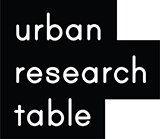Investigating Place in the Age of Mobility: A Short Introduction
A few decades already passed since the recognition of the effects of globalization on the identity of territories. On the one hand, economics and politics rearrange cities and regions into an uneven network of strategic nodes and connections (Friedmann, 1986; Sassen, 1991; Storper, 1997). On the other hand, the spreading of technologies, infrastructures, and communications systems produced new forms of space and time (Castells, 1996) that contribute to the progressive ‘disembedding’ of localities throughout the world (Giddens, 1990). This ongoing transformation is causing a metamorphosis of places; therefore, of one of the ways through which we see and understand reality – the consequences of which are wide-ranging and far from being entirely understood.
In particular, the ongoing debate tends to focus on the transformation produced by mobilities. In the first place, this circumstance reveals a change about the status of movement within place theory. Once deemed to be a fundamental obstacle to the creation of place identity (Norberg-Schulz, 1980; Tuan, 1974) or to be leading to a sense of ‘placelessness’ (Relph, 1976) or ‘non-place’ (Augé, 1995), movement and transit become a relational performance linking people and places. At the same time, and by reflecting the increasing intensity of transit-driven phenomena to determine the experience of cities and regions on a daily basis, this theoretical approach acknowledges how an increasing share of humans – the author of this piece included – is on the move.


If this ‘new mobility paradigm’ (Sheller & Urry, 2006) recognizes mobility as a meaningful dimension, it also allows a reevaluation of the contribution of infrastructures and transit nodes to define the identity of places. Highways, railway stations, airports, and the transit-oriented development they foster are some of the most recognizable symbols of contemporary urbanism from megacities to local towns. They also represent places of confluence between trajectories, stories, or policies which are entangled by the practice of mobility. However, and despite their importance to determine vital aspects of sense of place and city life, the spatial and behavioral examination of transit infrastructure is still insufficient. This critique especially applies to the study of Asian mobilities (Cresswell, 2016) that refer to a different socio-cultural tradition and display a rather different historical evolution if compared to the North-American or European case.



How to analyze and describe the sense of place produced by transit-oriented urbanism? How to illustrate the complexity of transit hubs and their contribution to urban identity and city life? My experience in Tokyo shows that traditional methods in urban studies and architecture are hardly sufficient to answer these questions. To amend this gap, historical research and direct observation need to be accompanied by innovative and interdisciplinary methods of recording and mapping reality. Network analysis, the study of border conditions, or the computation of people’s movement represent possibilities that need to be explored. Apart from fostering a better understanding of cities, this approach proves valuable for policy-makers, designers and developers. The importance of transit infrastructure and places of mobility deserves such attention, and we are all called to action.
References
Augé, M. (1995). Non-places : introduction to an anthropology of supermodernity. (J. Howe ,Trans.). London: Verso.
Castells, M. (1996). The rise of the network society. Cambridge, MA: Blackwell.
Cresswell,T. (2016). Afterword – Asian mobilities/Asian frictions? Environment andPlanning A, 48(6), 1082–1086.
https://doi.org/10.1177/0308518X16647143
Friedmann,J. (1986). The World City Hypothesis. Development and Change, 17(1),69–83. https://doi.org/10.1111/j.1467-7660.1986.tb00231.x
Giddens, A. (1990). The consequences of modernity. Stanford, CA: Stanford University Press.
Norberg-Schulz, C. (1980). Genius loci : towards a phenomenology of architecture. New York, NY: Rizzoli.
Relph, E. C. (1976). Place and placelessness. London: Pion.
Sassen, S. (1991). The global city : New York, London, Tokyo. Princeton University Press.
Sheller, M., & Urry, J. (2006). The new mobilities paradigm. Environment and Planning A, 38(2), 207–226.
Storper, M. (1997). The regional world : territorial development in a global economy. New York: Guilford Press.
Tuan, Y. (1974). Topophilia: a study of environmental perception, attitudes, and values. Englewood Cliffs, NJ: Prentice-Hall.
